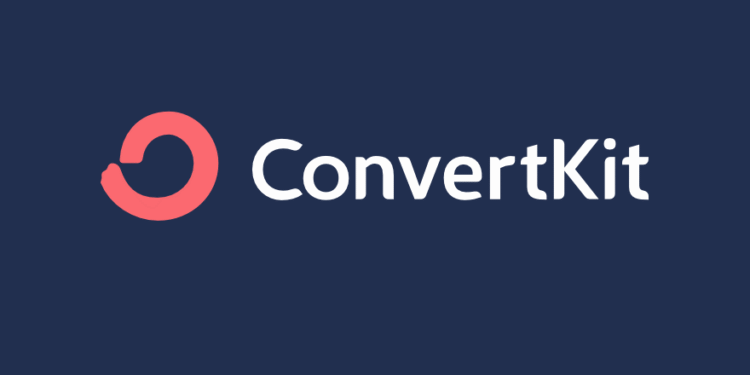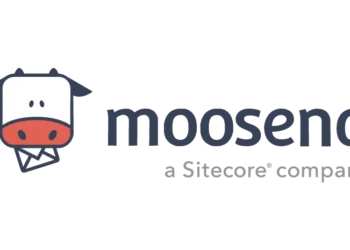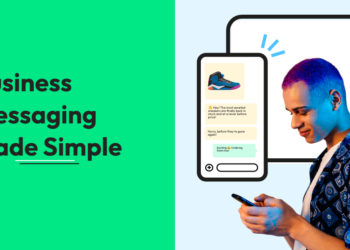What if you could tap into a marketing strategy that has been generating massive returns since 1978, with the first campaign resulting in $13 million in sales from just 400 subscribers? This is the power of email marketing, and with the right email marketing platform, such as ConvertKit, you can unlock its full potential. As more than half of the world’s population uses email, and this figure continues to grow, it’s essential to have the right automation tools to manage your email marketing efforts effectively.
With ConvertKit, you can streamline your email marketing, leveraging its powerful features to grow your email list, create effective email campaigns, and automate your marketing efforts. The question is, are you ready to take your email marketing to the next level and start seeing real results, like earning $25,000 in just five days, with the right ConvertKit strategies?
Key Takeaways
- Email marketing has been a highly effective strategy since 1978, with significant returns on investment.
- More than half of the world’s population uses email, making it a crucial marketing channel.
- ConvertKit is an email marketing platform that offers powerful automation tools to manage your email marketing efforts.
- With ConvertKit, you can grow your email list, create effective email campaigns, and automate your marketing efforts.
- By leveraging ConvertKit’s features, you can achieve significant returns on investment, like earning $25,000 in just five days.
- ConvertKit’s automation tools can help you save time and increase efficiency in your email marketing efforts.
Introduction to ConvertKit
ConvertKitis a powerful email marketing platform designed to help small businesses and solopreneurs manage their email marketing efforts effectively. With its range of features and tools, including automation tools and customizable templates, ConvertKit provides a comprehensive solution for growing an email list and increasing engagement. By utilizing ConvertKit’s features, users can create effective email marketing campaigns, automate tasks, and track key metrics to optimize their strategy.
At its core, ConvertKitis an email marketing platform that enables users to grow their email list, create and send targeted emails, and automate sequences to nurture leads. The platform’s automation tools allow users to set up complex workflows, ensuring that the right messages are sent to the right people at the right time. This level of personalization helps to build strong relationships with subscribers, ultimately driving more sales and revenue.
What is ConvertKit?
ConvertKit is a robust email marketing platform that offers a free trial for up to 1,000 subscribers, as well as a 30-day free trial for its paid plan. Founded in 2013, ConvertKit has established itself as a leading solution for businesses and individuals looking to manage their email marketing efforts efficiently. The platform’s dashboard provides key metrics, such as total subscribers, average open rate, and average click-through rate, giving users valuable insights to inform their strategy.
Key Features of ConvertKit
Some of the key features of ConvertKitinclude its visual automation builder, which offers 6 different automation templates, and its range of form styles, including 6 inline form styles, 7 modal form styles, and 6 slide-in form styles. Additionally, ConvertKit provides 41 landing page designs, giving users the flexibility to create professional-looking pages that convert. The platform also includes a Double Opt-In feature, which reduces spam sign-ups and lowers reporting for spam incidents, ensuring that users’ email lists remain clean and engaged.
Who Should Use ConvertKit?
ConvertKit is ideal for small businesses, solopreneurs, and anyone looking to manage their email marketing efforts more effectively. By using ConvertKit, users can grow their email list, create targeted email campaigns, and automate sequences to nurture leads. Whether you’re just starting out or looking to scale your business, ConvertKit provides the tools and features needed to succeed in email marketing, helping you to grow your email list and increase revenue through effective email marketing strategies and automation tools.
Setting Up Your ConvertKit Account
To get started with ConvertKit, an email marketing platform, setting up your account is a straightforward process. This involves creating an account, configuring account settings, and setting up a payment method. With a 14-day free trial offered upon signing up, you can explore the features of ConvertKit, including its subscriber management capabilities.
When creating your account, you’ll have the option to choose from various plans, including a free plan that allows for up to 1,000 subscribers. The premium plan starts at $9/month, offering more advanced features for managing your email list. It’s essential to configure your account settings, including setting up a verified sending domain to ensure email deliverability.
Creating Your Account Step-by-Step
The sign-up process for ConvertKit is simple, and you can start by selecting a plan that suits your needs. You’ll need to provide basic information, such as your name and email address, and create a password for your account. After completing the sign-up process, you can configure your account settings, including setting up a payment method and adding multiple email addresses to your account.
Configuring Account Settings
Configuring your account settings is crucial for effective subscriber management. This includes setting up a profile, configuring notification preferences, and setting up a payment method. You can also implement a ‘double opt-in’ policy to confirm subscriber email addresses, which can lead to a 50% higher open rate compared to single opt-in methods. With ConvertKit, you can create forms for various sign-up possibilities, such as pop-ups and sidebar forms, and use tagging and segments to track individual actions and group subscribers for targeted marketing strategies.
Understanding ConvertKit Tools and Features
ConvertKitoffers a range of tools and features to help small businesses and solopreneurs manage their email marketing efforts. With its automation tools, users can streamline their email marketing processes, improving lead generation and conversion rate optimization. The platform provides tags and segments to organize and target subscribers, making it easier to create personalized email campaigns.
Forms and landing pages are also essential features in ConvertKit, allowing users to capture leads and create a seamless user experience. The platform’s automation tools enable users to automate email marketing efforts, saving time and increasing efficiency. By leveraging these features, users can focus on creating engaging content and building strong relationships with their audience, ultimately driving business growth through effective lead generation and conversion rate optimization.
ConvertKit’s features are designed to help users create effective email marketing campaigns, from creating and sending emails to tracking and analyzing performance metrics. By utilizing these tools and features, users can optimize their email marketing strategy, improving conversion rates and driving business success. With its user-friendly interface and robust features, ConvertKit is an ideal choice for small businesses and solopreneurs looking to elevate their email marketing efforts and improve lead generation and conversion rate optimization.
Building Your Email List
Creating a robust email list is crucial for effective email marketing. It involves gathering a list of subscribers interested in receiving emails from a business or organization. To grow your email list, you need to implement lead generation strategies, such as using opt-in forms, lead magnets, and social media campaigns. These strategies can help increase your email list and improve your email campaigns.
A well-crafted lead magnet can significantly influence sign-up rates. Examples of lead magnets include a 5-day email course, resource lists, bite-sized checklists, and downloadable PDFs. These offers provide value in exchange for email addresses, making it more likely for users to subscribe to your email list. By using platforms like ConvertKit, you can create and deliver lead magnets efficiently, making it easier to grow your email list and create effective email campaigns.
Growth Strategies for Your List
One effective way to grow your email list is by using opt-in forms within blog posts, dedicated landing pages, or popups. You can also use tags to categorize subscribers based on their actions, providing targeted marketing opportunities. ConvertKit allows for the creation of inline forms, modal forms, and can embed forms mid-post using a shortcode structure, making it easy to capture email addresses and grow your email list.
Effective Lead Magnets to Use
Simple lead magnets, like a PDF of a long post, can be created in a matter of minutes to encourage email sign-ups. ConvertKit provides universal access to landing page templates to facilitate the email collection process without needing advanced technical skills. By using these templates and creating compelling lead magnets, you can increase your email list and create effective email campaigns that drive engagement and conversion.
Creating Your First Email Campaign
When it comes to email marketing, creating an effective email campaign is crucial for engaging with your audience and managing your subscribers. With the right marketing automation software, you can streamline your email campaigns and focus on subscriber management. To start, you need to choose the right email type, whether it’s a broadcast, sequence, or automation.
Choosing the Right Email Type
Each type of email serves a different purpose, and selecting the right one depends on your goals and audience. For example, a broadcast is a one-time email, while a sequence is a series of emails sent over a period of time. Understanding the differences between these email types will help you create a successful email campaign.
Crafting Engaging Subject Lines
A well-crafted subject line can make all the difference in getting your email opened. With the help of marketing automation software, you can test and optimize your subject lines to improve your email campaigns. By focusing on subscriber management and using the right email type, you can create effective email campaigns that engage your audience and drive results.
Utilizing Automated Email Sequences
Automated email sequences are a powerful tool in email marketing, allowing businesses to send a series of emails to subscribers over a period of time, with each email building on the previous one. This strategy can significantly improve lead generation and conversion rate optimization. By utilizing automation tools, companies can create personalized email sequences that cater to the needs of their subscribers, increasing engagement and driving sales.
According to recent studies, welcome email sequences can increase subscriber engagement by up to 10 times compared to standard email campaigns. Moreover, businesses that utilize automated email sequences experience an average open rate of 50% for welcome emails, significantly higher than the standard email open rate of around 20%. By leveraging automation tools, companies can create effective email sequences that drive results and improve their overall conversion rate optimization.
When creating automated email sequences, it’s essential to consider the timing and frequency of the emails. Sending 3-5 emails within the first week of subscribing can help maintain engagement and remind subscribers of the brand. By using automation tools to create personalized email sequences, companies can improve their lead generation and conversion rate optimization, ultimately driving more sales and revenue.
Best Practices for Timing and Frequency
Best practices for timing and frequency include spacing out emails to avoid overwhelming subscribers and using triggers and actions to personalize the content. By utilizing automation tools and following these best practices, companies can create effective automated email sequences that drive results and improve their overall email marketing strategy.
Analyzing Performance Metrics
To optimize your email campaigns, it’s crucial to track key performance metrics. This involves analyzing open rates, click-through rates, and conversion rates to understand how your subscribers interact with your content. Effective subscriber management is vital to improving these metrics, and utilizing marketing automation software can help streamline this process.
With the right tools, such as SegMetrics, you can measure lifetime revenue analytics and assess the impact of nurture sequences on total revenue. By filtering performance metrics based on tags, sources, and purchases, you can identify profitable customer segments and create custom reports to gain actionable insights.
By leveraging these insights, you can refine your email campaigns and improve overall performance. For instance, segmenting and personalizing emails can significantly enhance engagement rates and potentially improve deliverability. By monitoring and analyzing these metrics, you can make data-driven decisions to optimize your marketing automation software and improve the effectiveness of your email campaigns.
Key Metrics to Track in ConvertKit
ConvertKit provides a range of analytics tools to help you track key metrics, including open rates, click-through rates, and conversion rates. By understanding these metrics, you can identify areas for improvement and optimize your email campaigns for better performance.
How to Use Analytics for Improvement
By using analytics to inform your email marketing strategy, you can create more effective email campaigns and improve subscriber engagement. This involves using data to identify trends and patterns, and making adjustments to your strategy accordingly. With the right approach to analytics, you can unlock the full potential of your email campaigns and drive real results for your business.
Integrating ConvertKit with Other Tools
As a powerful email marketing platform, ConvertKit offers a range of automation tools to streamline your marketing efforts. By integrating ConvertKit with other tools and platforms, you can extend its functionality and save up to 30% of time spent on email marketing tasks. For instance, integrating ConvertKit with Shopify allows for automated email campaigns based on purchase history, recovery of abandoned carts, and segmentation of customers.
ConvertKit’s integrations include a total of 11 plugins and apps recommended to enhance functionality and lead generation, such as Thrive Suite, Uncanny Automator, and Zapier. The integration of ConvertKit with Zapier connects it with over 2,000 apps, automating various tasks and preventing manual data entry errors. Additionally, integrating ConvertKit with Calendly enables new meeting bookings to automatically populate the ConvertKit subscriber list, facilitating tailored follow-up emails.
By leveraging these integrations, you can transform ConvertKit into an effective marketing tool for your online business. With automated emails generating 320% more revenue than non-automated emails, it’s essential to explore the full potential of ConvertKit’s automation tools. Whether you’re a professional blogger, online course educator, or small business owner, integrating ConvertKit with other tools can help you achieve your marketing goals and drive significant business growth.
Popular Integrations with ConvertKit
Some popular integrations with ConvertKit include WordPress, Teachable, and WooCommerce. These integrations enable you to automate various tasks, such as adding new students to email sequences, recovering abandoned carts, and segmenting customers. By exploring these integrations, you can unlock the full potential of ConvertKit and take your email marketing to the next level.
How to Set Up Integrations
Setting up integrations with ConvertKit is relatively straightforward. You can use APIs, webhooks, or Zapier to connect ConvertKit with other tools and platforms. By following the instructions provided by ConvertKit, you can easily integrate your account with other tools and start automating your marketing efforts. With ConvertKit’s user-friendly interface and extensive documentation, you can quickly get started with integrations and start seeing the benefits of automated email marketing.
Segmenting Your Audience for Better Targeting
Segmenting an audience is a crucial step in email marketing, as it allows businesses to divide their list of subscribers into smaller groups based on demographics, behavior, or preferences. This targeted approach can significantly improve the effectiveness of email campaigns, leading to better lead generation and conversion rate optimization. According to recent studies, 84% of marketers believe that customer segmentation is crucial for improving customer engagement and retention, while segmenting your audience can improve email marketing performance by up to 760%.
By using ConvertKit’s segmentation tools, businesses can create targeted groups based on various criteria, such as demographics, behavior, or preferences. This enables them to send personalized email messages that are more likely to engage their audience, resulting in higher open rates and click-through rates. In fact, businesses using segmented email campaigns experience a 14% higher open rate and a 100% higher click-through rate than un-segmented campaigns. Effective tactics for segmentation include using tags, segments, and conditions to create dedicated subscriber profiles, facilitating better data capture on user preferences and behaviors.
Personalized email messages can improve click-through rates (CTR) by an average of 14% and conversions by 10%. Moreover, 70% of consumers say that they only engage with personalized messaging. By incorporating segmentation into their email marketing strategy, businesses can improve customer engagement, increase revenue, and enhance the overall effectiveness of their email campaigns. With the right approach to segmentation, businesses can experience a significant boost in their lead generation and conversion rate optimization efforts, ultimately driving more sales and revenue through their email campaigns.
Troubleshooting Common ConvertKit Issues
As an email marketing platform, ConvertKit provides a range of automation tools to help users manage their campaigns. However, like any other platform, it’s not immune to issues. Troubleshooting common ConvertKit issues is crucial to ensure that your email marketing strategy runs smoothly. According to recent data, ConvertKit’s architecture can sometimes lead to inefficiencies, such as a lengthy unsubscribe process and delayed support responses.
Some common problems that users face include issues with email delivery, subscriber management, and automation tools. For instance, importing lists can often lead to confusion, and the lack of detailed feedback during the import process can result in a failure rate of 0.2%. Moreover, the current support process can be time-consuming, with users required to click through multiple prompts before reaching a human support representative.
To resolve these issues, it’s essential to use ConvertKit’s support resources effectively. This includes checking the status page for any outages or maintenance, as well as reaching out to support representatives for assistance. By being proactive and troubleshooting common issues, users can minimize downtime and ensure that their email marketing campaigns continue to run smoothly. With the right approach, ConvertKit’s automation tools can help users streamline their email marketing strategy and achieve better results.
Common Problems and Solutions
Some common problems that users face include issues with email delivery, subscriber management, and automation tools. To resolve these issues, users can try troubleshooting common problems, such as checking their email settings and subscriber lists. If the issue persists, it’s best to contact ConvertKit’s support team for assistance.
When to Contact Support
If you’re experiencing issues with your ConvertKit account, it’s essential to know when to contact support. If you’ve tried troubleshooting common problems and the issue still persists, it’s best to reach out to ConvertKit’s support team for assistance. They can help you resolve the issue and get your email marketing campaign back on track.
Tips for Optimizing Your Email Marketing Strategy
Optimizing an email marketing strategy is crucial for achieving success in email marketing. This involves using various techniques such as A/B testing, personalization, and segmentation to improve email marketing efforts. By utilizing these techniques, businesses can create effective email campaigns that resonate with their target audience.
One key aspect of optimizing email marketing strategy is using A/B testing to enhance email campaigns. This can lead to a significant increase in open rates, with some studies showing a 49% increase. Additionally, emails with personalized subject lines generate 26% higher open rates compared to those without. By using marketing automation software, businesses can automate repetitive tasks and focus on strategizing and creative endeavors.
Effective subscriber management is also essential for optimizing email marketing strategy. This involves segmenting email lists to create targeted email campaigns. By doing so, businesses can experience a 760% increase in revenue from email marketing efforts. Furthermore, automated email campaigns have an open rate that can be as high as 50%, significantly above the general average of 20% for regular email campaigns.
A/B Testing Tips for Emails
To get the most out of A/B testing, businesses should test different elements of their emails, such as subject lines and calls to action. This helps identify what resonates with recipients and optimize future campaigns. By using email marketing automation software, businesses can streamline their email marketing efforts and improve deliverability rates.
Best Practices for Deliverability
Best practices for deliverability include setting up email authentication to prevent misclassification as spam. Consistent email communications also contribute to stronger brand loyalty and customer advocacy. By following these tips and usingroughly marketing automation software, businesses can create effective email campaigns that drive results.
Conclusion and Next Steps
As we conclude our exploration of ConvertKit, the powerful email marketing platform, it’s clear that this tool offers a wealth of features to streamline your email marketing efforts. From building an engaged subscriber list to crafting automated email sequences, ConvertKit is an invaluable asset for any email marketing strategy.
Throughout this comprehensive guide, we’ve covered the key components of using ConvertKit, including setting up your account, understanding the platform’s tools and features, and leveraging advanced capabilities like audience segmentation and performance analytics. By implementing these strategies, you can effectively conquer your email marketing and achieve impressive results.
To continue your journey with ConvertKit, we encourage you to explore the platform’s extensive resources, such as their support documentation, helpful tutorials, and informative webinars. With a wealth of information at your fingertips, you can further enhance your email marketing skills and stay ahead of the curve.
Recap of Key Learnings
In this article, you’ve learned how to:
- Set up a ConvertKit account and configure your settings
- Utilize the platform’s features, including tags, segments, forms, and automation
- Build a thriving email list through effective lead magnets and growth strategies
- Create engaging email campaigns with compelling subject lines and personalized content
- Leverage automated email sequences to nurture your audience and drive conversions
- Analyze key performance metrics to optimize your email marketing strategy
Resources for Further Enhancement
To continue your ConvertKit journey and further enhance your email marketing skills, we recommend exploring the following resources:
- ConvertKit Knowledge Base – Comprehensive documentation and tutorials
- ConvertKit Webinars – On-demand and live webinars covering various email marketing topics
- ConvertKit Community – Connect with fellow marketers and get support from the ConvertKit team
- Email Marketing Blogs – Stay up-to-date with the latest industry trends and best practices
By leveraging the insights and resources provided in this article, you’re well on your way to mastering email marketing with the help of ConvertKit. Embrace the power of this platform and continue to refine your strategies for greater success in your email marketing endeavors.
FAQ
What is ConvertKit?
ConvertKit is an email marketing platform designed to help small businesses and solopreneurs manage their email marketing efforts more effectively. It offers a range of features, including automation tools, customizable templates, and advanced analytics.
Who should use ConvertKit?
ConvertKit is ideal for small businesses, solopreneurs, and anyone looking to manage their email marketing efforts more effectively. It’s particularly well-suited for those who want to grow their email list, create effective email campaigns, and automate their email marketing efforts.
How do I set up a ConvertKit account?
Setting up a ConvertKit account is a straightforward process. You’ll need to create an account, configure your account settings, and set up a payment method. ConvertKit provides a detailed guide to help you get started.
What tools and features does ConvertKit offer?
ConvertKit offers a range of tools and features, including tags, segments, forms, landing pages, and automation tools. These tools can help you manage your email marketing efforts more effectively, including organizing your subscribers, capturing leads, and automating your email campaigns.
How do I build my email list with ConvertKit?
ConvertKit offers a variety of growth strategies for building your email list, including opt-in forms, lead magnets, and social media campaigns. You can also import existing subscribers into your ConvertKit account using CSV files or other import methods.
How do I create an email campaign in ConvertKit?
Creating an email campaign in ConvertKit involves choosing the right email type, crafting engaging subject lines, and designing email templates. ConvertKit’s automation tools can also help you automate your email campaigns, including using triggers, actions, and conditions.
How do I use automated email sequences in ConvertKit?
ConvertKit’s automation tools allow you to create automated email sequences, which are pre-written series of emails that are sent to subscribers based on specific triggers or conditions. You can use these sequences to nurture leads, onboard new subscribers, or deliver ongoing content to your audience.
How do I track and analyze my email marketing performance in ConvertKit?
ConvertKit provides a range of analytics tools to help you track key metrics, such as open rates, click-through rates, and conversion rates. You can use these analytics to identify areas for improvement and optimize your email marketing efforts over time.
How do I integrate ConvertKit with other tools?
ConvertKit offers a range of integrations with popular tools, including WordPress, Shopify, and Stripe. You can use these integrations to streamline your email marketing efforts and connect your ConvertKit account with other software you use to run your business.
How do I segment my audience in ConvertKit?
ConvertKit’s segmentation tools allow you to divide your list of subscribers into smaller, more targeted groups based on factors like demographics, behavior, and preferences. This can help you create more personalized and effective email campaigns.
What should I do if I have trouble with ConvertKit?
If you encounter any issues with ConvertKit, you can first try to troubleshoot common problems using the platform’s support resources. If you’re unable to resolve the issue on your own, you can contact ConvertKit’s customer support team for further assistance.





